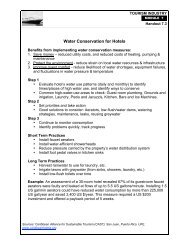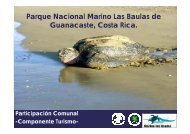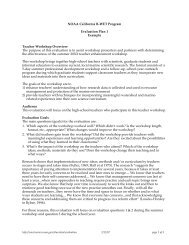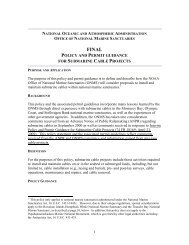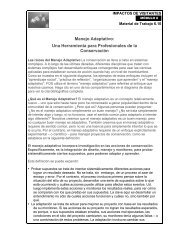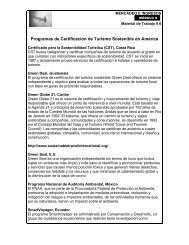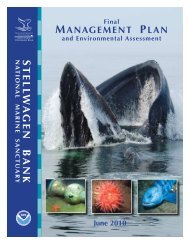The Hawaiian spinner dolphin, Stenella longirostris: Effects of tourism.
The Hawaiian spinner dolphin, Stenella longirostris: Effects of tourism.
The Hawaiian spinner dolphin, Stenella longirostris: Effects of tourism.
You also want an ePaper? Increase the reach of your titles
YUMPU automatically turns print PDFs into web optimized ePapers that Google loves.
50<br />
only for breaches (p < 0.05). For all other aerial activities (all aerial activities,<br />
headslaps, tail slaps, leaps, spinning leaps and flips), the presence <strong>of</strong> humans did not<br />
significantly alter <strong>dolphin</strong> behavior (Figure 11 a). In the afternoon, <strong>dolphin</strong>s were more<br />
active when humans were present than when they were not (all aerial activities p <<br />
0.001, headslaps p< 0.003, tail slaps p = 0.11, breaches p = 0.002, leaps p < 0.001,<br />
spinning leaps p < 0.001, flips p= 0.008,) (Figure 11 b). However, the mean frequency<br />
<strong>of</strong> aerial activities per <strong>dolphin</strong> per hour in the presence <strong>of</strong> humans was not significantly<br />
different between the morning and afternoon.<br />
Human activities impacted <strong>dolphin</strong> surfacing behaviors differently in the<br />
morning than in the afternoon. Human activities had no impact on <strong>dolphin</strong> surfacing<br />
behavior before 1115 (p = 0.67). However, after 1115, <strong>dolphin</strong>s were more likely to<br />
surface asynchronously in the presence <strong>of</strong> human activities (p < .001) (Figure 12).<br />
Dolphin schools surfacing synchronously displayed fewer aerial activities than <strong>dolphin</strong><br />
schools surfacing asynchronously (p < 0.001) (Figure 13).<br />
<strong>The</strong> presence and type <strong>of</strong> human activities had no impact on the number <strong>of</strong> aerial<br />
activities per <strong>dolphin</strong> per hour in the morning (p > 0.5) (Figure 14a). However,<br />
swimmers and kayaks following <strong>dolphin</strong>s within 10 m (p < .002) and motorboats<br />
driving through the <strong>dolphin</strong> school (p < .076) increased the frequency <strong>of</strong> aerial activities<br />
in the afternoon (Figure 14b). <strong>The</strong> mean number <strong>of</strong> aerial activities per <strong>dolphin</strong> per<br />
hour was not related to the number <strong>of</strong> swimmers (Figure 15) or kayaks (Figure 16)<br />
following within 10 m <strong>of</strong> <strong>dolphin</strong>s.





